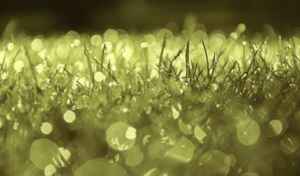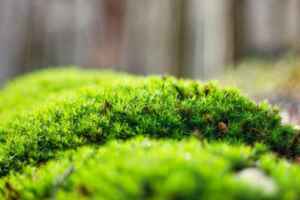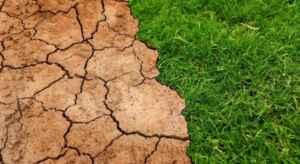Dead Patches- Do They Need To Be Reseeded Or Will It Heal Itself?
A dead patch in your lawn is when an area of grass dies and does not grow back. Two causes for this are drought stress (not enough water) and winterkill (too much cold). Drought stress tends to be more common, especially in the Southwestern United States where we have been having a drought for several years now.
Patches of dry, dead turf can be frustrating to homeowners and difficult for landscape professionals to deal with because the area often continues to thin out even as water and fertilizer are applied. Therefore, knowing if seeds will germinate in such an environment is important.
When examining your lawn, it is important to research if you should reseed, when you should reseed, if you should reseed and how you should reseed.
The following information should help you understand whether your lawn needs reseeding or not:
 Causes Of Dead Patches
Causes Of Dead Patches
The first thing to do is determine if the dead patch can be attributed to water stress or cold damage. You don’t want to make the wrong assumptions and resow your lawn needlessly; not only because of the extra expense but also because sowing seeds during times when they shouldn’t germinate (like in summer) will lead to poor germination and a poorly established lawn that is prone to disease.
Cold Damage
If the dead patch is a result of cold damage, you need to know how long it has been dead. A recent injury will have green tissue at the center of the injured area which can be carefully cut out with a knife or even pulled out with your fingers if it is small enough. If the cold injury occurred less than 3 weeks ago, then go ahead and reseed according to your lawn needs (usually recommended for yards that are more than 75% dead). However, if the damage is older than 1 month, then seeds will not grow in this area because you don’t want them to germinate during hot weather.
Water Stress
If the dead area is a result of water stress, then you need to determine how long it has been without water. If it has been dry for less than 1 month, then go ahead and reseed your lawn per your lawn needs (usually recommended when more than 50% of the grass is dead). However, if the area has been without water for longer, then the soil may be completely dry down to the soil surface. In this case, seeds will not grow at all because you don’t want them germinating during hot weather.
When Dead Spots Occur
It is important to keep in mind that drought stress damage can occur at any time of year and it is especially prevalent during the summer months. If it has been hot and dry for a long period, then your yard may just be showing damage from this type of stress – even if it is winter. If you choose to reseed such areas, remember that you will need to water heavily until new seedlings establish themselves, or else they will not survive during the hot summer months.
How Dead Patches Occur
Trees Nearby
If you live in a neighborhood with many trees, then damage from drought and cold may not be so obvious for several reasons: 1) the leaves of surrounding trees can block sunlight from reaching dry patches; 2) the roots of nearby trees steal water from turf areas near them because turf grasses grow faster than tree roots, thus leaving dry spots in the lawn; and 3) the roots of nearby trees produce a gas called ethylene which can cause seeds or seedlings to die. In this case, you need to know whether the dead areas have been there for less than 1 month because if not, they may be beyond help.
If your yard is in the woods, then reseeding is not an option. You can’t seed in soil that has high levels of leaf litter (unless you decide to manage it with chemicals like Garlon) and trees will often deplete the soil of nutrients, especially if they are pine trees that produce acid that leaches out calcium, magnesium, potassium, and other nutrients. In this case, you may need to plant shade-tolerant species instead of cool-season grasses which are usually preferred for lawns.
Length Of Time Dead Patch Is Visible
If the dead patches have been there for longer than 1 year, then you will probably not be able to successfully grow any grass in them – even if they do get water! Patches that are this old often contain roots of other plants like moss which can keep them alive.
 Location Of Dead Patches
Location Of Dead Patches
If the dead patches are located next to buildings, then you should remove all weeds first because they will compete with grass for water and fertilizer. After that, it’s best not to do anything that requires digging into the soil near building foundations because you may damage building foundations, septic systems, or water lines. In this case, it’s best to hire a professional instead of trying to do the work yourself.
How To Reseed
You don’t want to reseed your lawn and choose instead to manage it by fertilizing and watering, then you should consider purchasing a mulching mower like the Earthwise MM 30 or Earthwise MM 55 to cut the grass clippings. This will speed up the process of decomposing and return nutrients to your lawn – especially if you fertilize with compost! The Earthwise line of mulching mowers is also an engine-free option that won’t contribute to air pollution.
When you encounter patches that are dry, but not dead, then you can try to remedy the situation by watering them well. If it has been less than 1 month since they were last watered, then water them lightly every day for at least 3 weeks. However, if the area has been without water for longer than this or if there are no visible signs of life in the brown patches, then it may be difficult to start grass from seed in such areas.
Convert Dead Patches
Consider converting a large patch of dead grass if you don’t want to bother with reseeding or using chemicals like Roundup, to ground cover instead. For example, if it’s full of violets, then just mow the area occasionally and pick out the remaining dead stems. If you prefer a low-maintenance ground cover instead, then consider planting something like periwinkle or creeping Jenny which can be mowed occasionally.
In general, it’s best to oversee your lawn every fall with a blend of grass seed containing at least three species of grass. That way, you will be more likely to have at least one species of grass that is well adapted to your local conditions. For example, if you live in a temperate climate with cold winters and hot summers, then it’s best to use a blend that contains ryegrass, fescue, and Kentucky bluegrass because they are the most cold-tolerant, heat-tolerant, and drought-tolerant grass species in your area.
What to Purchase for Reseeding
If you are growing a lawn from seed, then it’s best to purchase turfgrass seeding mix instead of plain grass seed because this is more likely to contain the seeds that you need in order to grow a healthy lawn. On the other hand, if you’re planting a groundcover, then it’s best to purchase low-growing plants by their botanical name instead of the common name because the common names can be confusing!
Description of lawn If you have a lot of moss in your lawn, then it’s best to use a moss killer or remove the grass and moss with a sod cutter before seeding the lawn. In this case, you may need to apply more seed than usual because you’re removing some of the soil where they normally grow. On the other hand, if there is only a little bit of moss, then you can spray a glyphosate herbicide on the patches and reseed.
You want the healthiest lawn possible, then it’s best not to reseed because this will introduce more weed seeds into your soil which could lead to a poor quality lawn. On the other hand, if you choose not to fertilize or water your lawn, then it may be best to reseed because this will make it easier for you to kill the weeds and promote a healthier lawn.
Soil Condition
If your soil is too thick or clay-like, then it’s best to work with a company that specializes in hydroseeding instead of mulching because they have much more experience dealing with these types of soils. On the other hand, if your soil contains a lot of sand, then it’s best to use a mulching lawn seeder instead of a hydroseeder because they have much more experience dealing with these conditions.
You can also recycle used coffee grounds from Starbucks or other coffee shops by using them as fertilizer for your lawn. Just sprinkle the grounds over the grass and water the area generously. However, you must pick out any plastic lids or other garbage before doing this because they may harm your grass!
 When to Reseed
When to Reseed
If you live in a temperate climate with cold winters, then it’s best to plant hardy grass species during the spring because they are most likely to survive if winter comes early. However, if you live in a tropical, subtropical, or arid climate with warm winters, then it’s best to plant warm-season grasses during the spring because they are most likely to survive if winter comes late. If you buy grass seed that is only half-germinated, then it may be best to plant it during the early spring when there is still a bit of moisture in the grass. On the other hand, if you buy green grass seed that’s been treated with a fungicide, then it may be best to plant it during the late autumn or early winter because this is when they are most likely to germinate.
Alternatives to Reseed
If you’re looking for an organic alternative to Roundup, then consider using corn gluten meal as a pre-emergent herbicide. That way, you will be able to kill the weeds before they even grow instead of having to deal with them after they already appear.
Often people prefer a more environmentally-friendly solution that is less toxic than Roundup, then consider using vinegar or lemon juice on your grass because these household items are natural weed killers and won’t introduce any harmful chemicals into the environment. However, vinegar and lemon juice are very strong so you need to be extremely careful when spraying them on your grass or it will damage your lawn!
I trust you learned more about the process of how, when, and if you should reseed your dead patches.

